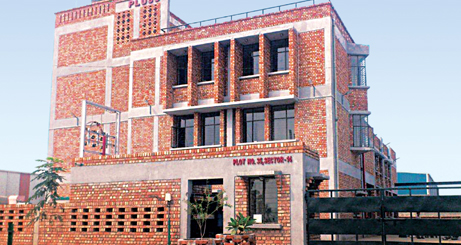Abstract
Thermal energy storage (TES) is an often unrecognized but important component of the developing market for energy storage systems. Most often used to provide cooling capacity for commercial buildings, TES systems are also increasingly seen as an effective means of shifting electricity use from daytime peak periods into less expensive periods of the day or night, saving money and increasing overall system efficiency. Globally, TES is expected to grow substantially through 2020, with worldwide revenues of $3.6 billion and added capacity of 3,824 MW in that year (Pike Research analysis). Newer forms of TES using different temperature phase change materials (PCMs) and advancement in designs to increase the efficiency of storage is the trend. This article attempts to discuss a new type of TES system and its advantages over the present design with a case study.
Flat Plate Thermal Energy Storage
The objective of integrating thermal energy storage in the HVAC system is to store cold/heat energy in the form of latent or sensible heat and release this energy at the desired time. In this article, we will be focusing on latent heat storage which essentially uses a PCM that has several times more energy storage capacity within a given volume as compared to sensible storage solutions. While phase change material itself is an integral part of the system, the most important factor is the effectiveness and efficiency of heat transfer mechanism which depends on the product design. The name ‘flat plate’ comes from the fact that the PCM is encapsulated in rectangular cuboid shaped containers. This shape has several advantages over other geometrical shapes in use – i.e. a cylinder or a sphere. The basic layout or the circuit of a TES system (Figure 1) may vary very slightly from one system to another.
Advantages of Flat Plates over Other Geometries
A comparison of the three different geometries illustrated in Figure 2 would show the volume utilization in each case. The grey area represents the PCM formation; the rectangular PCM has a higher PCM density compared with the spherical/ cylindrical formations. Several variations of spherical and cylindrical PCM storage are illustrated in Figure 3, in which the light grey area represents the heat transfer fluid and the dark grey area the PCM. Studies conducted to test the impact of PCM shape on freezing performance shows that a plane heat exchanger surface is much more effective than a cylindrical or spherical shape. In the graph in Figure 4, the blue, red and black lines represent plane, cylindrical and spherical heat exchanger surfaces respectively. PCM thickness ‘s’ grows the fastest for cooling/ heating from plane/ rectangular geometry than from cylindrical, and the slowest away from a spherical geometry. The location of phase thickness ‘s’ with time relates the heat flux (dQ/dt) to the geometric dimensions. The heat flux or the power of cooling decreases from plane or rectangular geometry to cylindrical geometry to spherical geometry. This is due to the fact that a rectangular geometry has high heat transfer surface to volume ratio. Due to a higher heat transfer area in a rectangular geometry, the thickness of the PCM can be reduced. Lower thickness contributes to higher rate of conductivity as after a certain stage the PCM itself deters the rate of conduction. To compare the difference in the heat transfer ratio between a spherical geometry and rectangular geometry, a comparison was


Leave a Reply
Your email address will not be published. Required fields are marked *